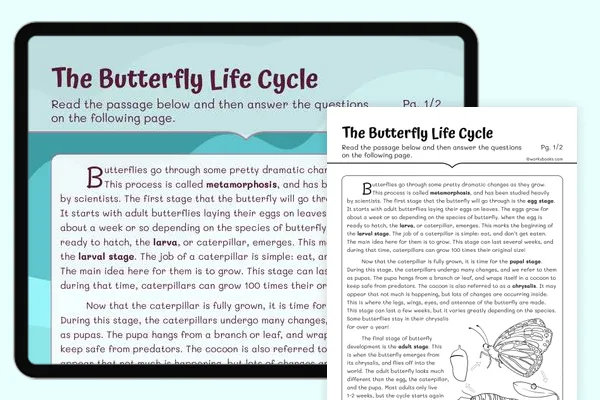What does 'global warming' mean? — Reading Comprehension
Grades
- 2
- 3
- 4
Standards
- RI.3.1
- RI.4.1
- 4.ESS2.D
PRINT+DIGITAL RESOURCE
This learning resource is available in interactive and printable formats. The interactive worksheet can be played online and assigned to students. The Printable PDF version can be downloaded and printed for completion by hand.
About This Reader
This passage explains global warming to children by comparing it to Earth having a fever. It describes how increased greenhouse gases in the atmosphere trap more heat, leading to rising global temperatures. The text outlines some consequences of global warming, including changing weather patterns and melting ice. It also mentions how these changes can affect plants, animals, and people worldwide. The passage concludes by noting that scientists are working to understand and address this global challenge.
Perfect For:
👩🏫 Teachers
- • Reading comprehension practice
- • Auto-graded assessments
- • Literacy skill development
👨👩👧👦 Parents
- • Reading practice at home
- • Comprehension improvement
- • Educational reading time
🏠 Homeschoolers
- • Reading curriculum support
- • Independent reading practice
- • Progress monitoring
Reading Features:
📖
Reading Passage
Engaging fiction or nonfiction text
❓
Comprehension Quiz
Auto-graded questions
📊
Instant Feedback
Immediate results and scoring
📄
Printable Version
Download for offline reading
🔊
Read Aloud
Voice-over with word highlighting





















